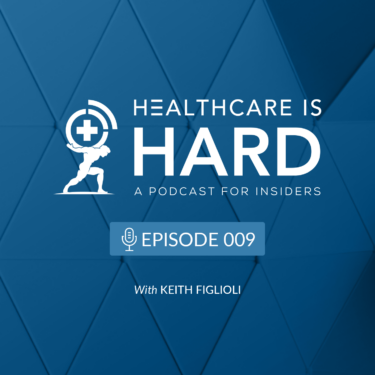It takes a lot of time and resources for health systems to drive innovation, but the investment has to happen if providers want to adapt to the fast pace of change on their own terms. Starting an internal innovation program can require a $10 million hit to the P&L in year one, and then many years before seeing any returns. There are great innovation groups that have been through this battle – but again, they’re mostly embedded within systems and focused internally.
The Innovation Institute, a for-profit collaboration between health systems, has shown that there’s an easier way to invest, share resources and infrastructure, and drive innovation that funds and sustains itself. As CFO and then COO of the St. Joseph Health System (now Providence St. Joseph Health), Joe Randolph helped kindle the idea for the Innovation Institute, where he now serves as President and CEO.
Part of the brilliance behind the Innovation Institute, and the unique business model it created, is the fact that some of its portfolio companies are not focused on innovation. Instead, they’re the economic engine that underwrites the innovation.
These companies are focused on the many business functions that health systems outsource – ranging from medical record coding, to clinical engineering, staffing and even construction management. Instead of having other companies make margin on these services, the Innovation Institute takes controlling equity in these businesses and treats them like any portfolio company, providing the capital and resources they need to grow and scale. Innovation Institute members aren’t required to use services from these companies, but when they can provide a better price or better quality than the competition, it enhances members’ investment because the cash flow goes back to funding innovation.
Joe describes this as a revenue re-direct. Health systems are already directing revenue to someone outside their organization that’s making margin; but this way, the Innovation Institute and its members get the benefit.
In this episode of the Healthcare Is Hard: A Podcast for Insiders, Joe discusses this model in greater detail, and just as importantly, talks about the other side of the Innovation Institute that fields, vets, researches and nurtures ideas from within its member systems. Through close collaboration with health systems, Joe has a unique perspective on how to bring change and innovation to healthcare in ways that work. His discussion with Keith Figlioli covers many of them, including:
- Giving physicians a safe space to innovate – As an administrator, Joe saw how passionate physicians and clinicians are about new ideas, and the many challenges they face in making them a reality. For example, physicians would voice ideas with great potential, but legal concerns would prevent him from investing in them. Often times, a physician would then move to an academic center or go to a manufacturer and develop the ideas on their own. When they’re successful, a health system ends up paying more for a product that essentially evolved within its own organization. To stop this from happening, the Innovation Institute provides the space and resources for ideas to flourish, and means to bring successful ideas to market – a massive challenge for physicians, or even smaller health systems, to do on their own.
- The right balance of “margin and mission” – Faith-based and mission-driven organizations have long been a cornerstone of healthcare in the U.S. However, as time passes and operators and administrators of these systems tend to become more secular, they move further away from their original charge. Joe talks about getting mission-driven systems back to their roots, which involves going into the community and finding partners to work with. Today, that could even mean working with big pharmacy players, retailers and big tech giants to deliver care where people need and want it. While there are risks in diversification and getting away from traditional core services, Joe talks about how it has to happen to protect margin and maintain the role that health systems play in care delivery.
- Clearing the collaboration hurdle – Creating shared resources and infrastructure among health systems is a great idea, but it’s easier said than done. Joe experienced this firsthand when recruiting other systems to create the Innovation Institute and talks about how getting the first commitment to join a collaborative is the biggest challenge. He understands the uncertainties and hesitation of other systems and how they must have looked at the idea as an investment in St. Joseph before others were on board. But explains how getting over that first challenge was a tipping point. Once ownership of the organization was spread among a few systems, many others came asking to join, and the benefits grew exponentially from there.
To hear Joe talk about these topics and more, listen to this episode of Healthcare is Hard: A Podcast for Insiders.
